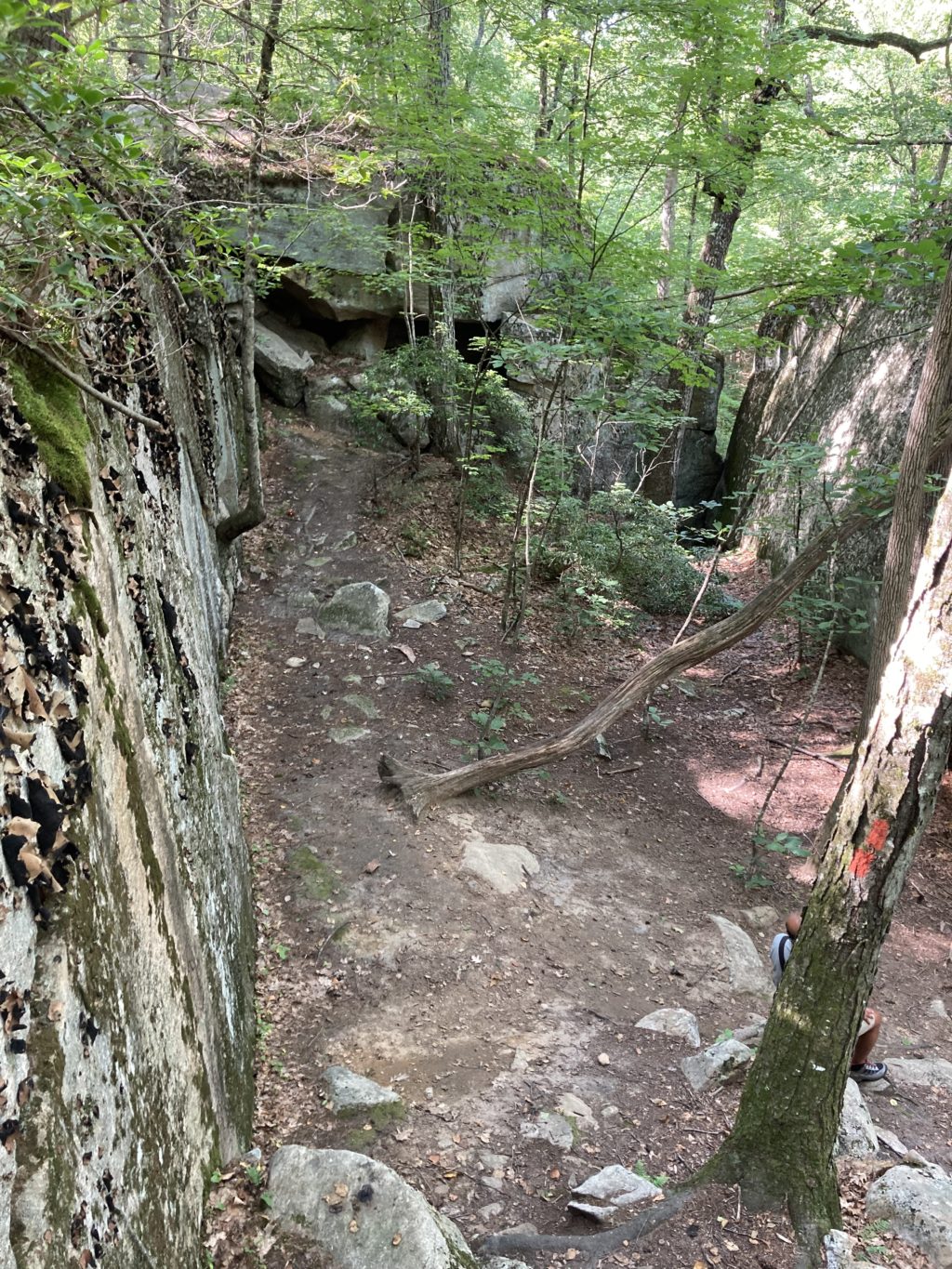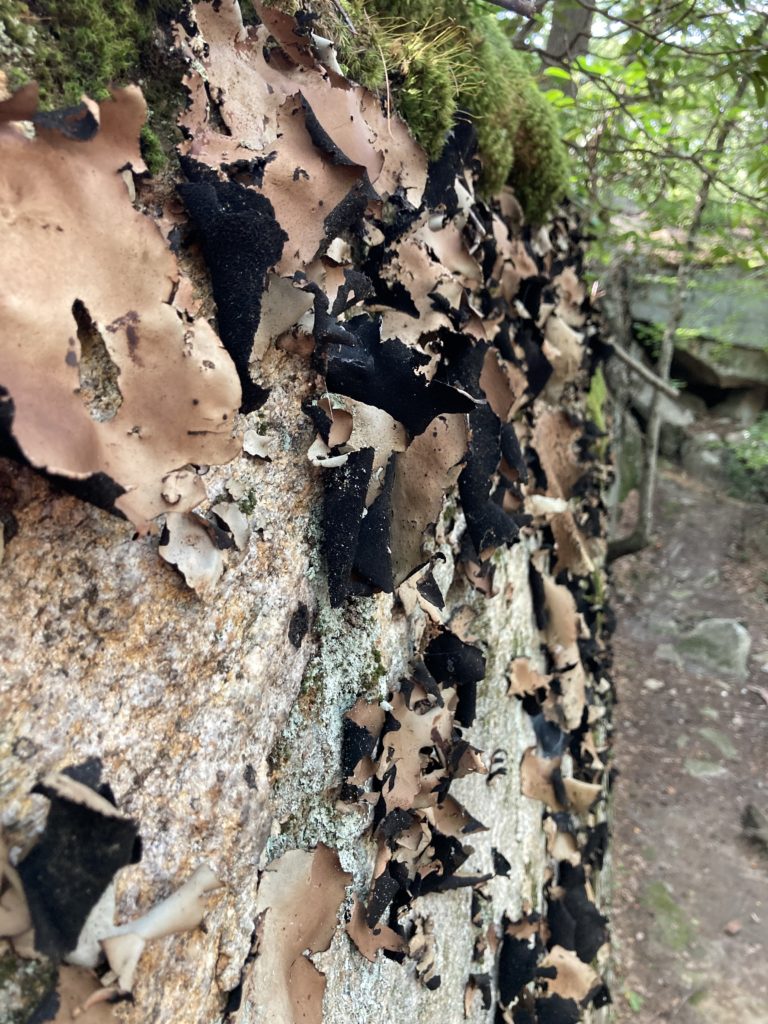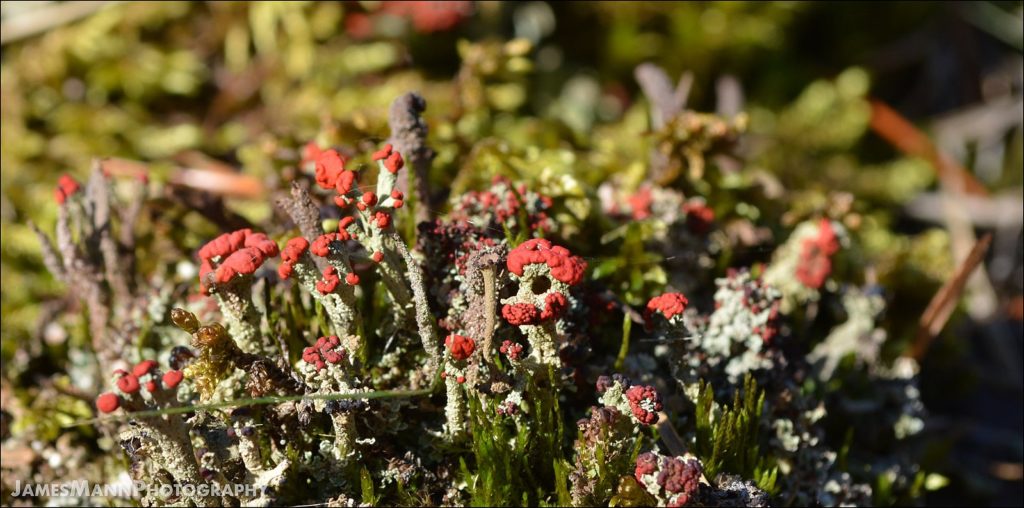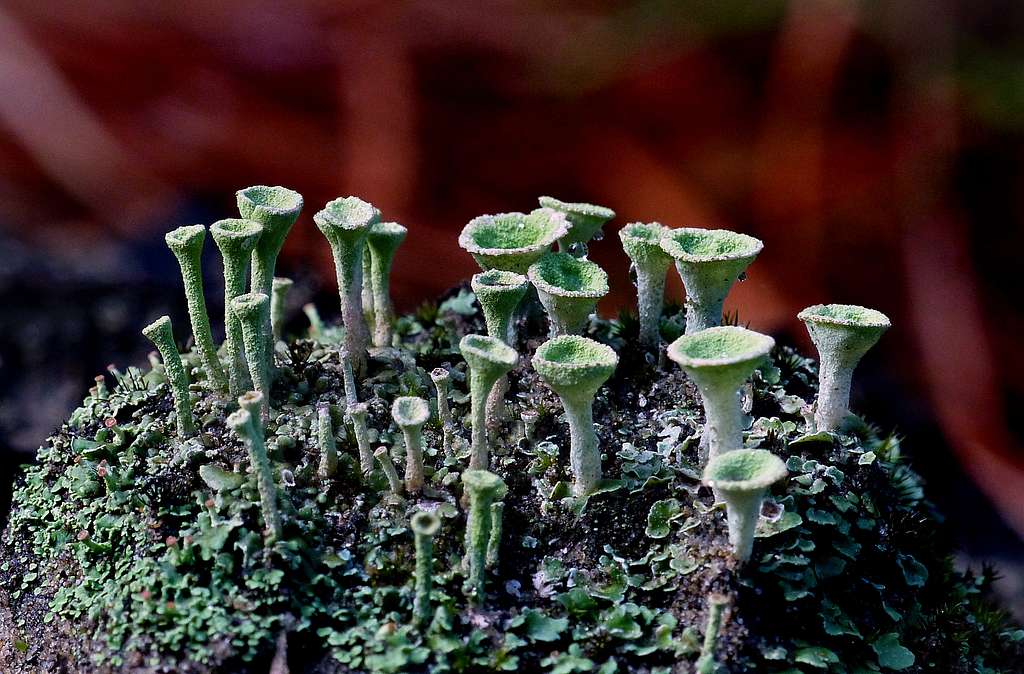Almanac: Lichens In The Pigpen

The interior area of Pigpen Ledges in Leverett. Photo: Stephen Braun
A friend and I recently hiked up the Robert Frost trail from North Leverett Road heading up along the west side of lovely Spaulding Brook. It was a sunny, warm morning, which meant the mosquitos were out and about, but they were not so bloodthirsty or numerous that they detracted from the quiet beauty of the woods.
After about a mile-and-a-half, the trail crosses the brook and ascends to an unusual rock formation dubbed Pigpen Ledges. Less “ledges” than “monoliths” these massive blocks of rock have split, or fallen (it’s hard to tell which) such that they have created a rectangular enclosure the size of a large living room, with walls about 25 feet high and a narrow entrance through which the trail passes. It would, actually, make for a fairly suitable pigpen, but it’s highly unlikely it was ever used for that purpose—at least I could find no record of such use online.
As we climbed in, on, and through the formation (there are some cool little cave-like passages), I was struck by the profusion of lichens on the rock faces. Ages ago I heard a naturalist offer a mnemonic about lichens: “A lichen is what happens when an algae and a fungi get to likin’ each other.” Lichens are often green, or gray/green, and can look like plants, but these amazing life forms are not plants—they have no roots, for one thing, and no vascular systems for transporting water or nutrients. They are, instead, hybrid organisms consisting of the union of a fungus and either an algae or a type of blue-green bacteria called cyanobacteria. The fungus provides the physical structure for the organism. The algae or bacteria are photosynthetic and produce the sugars and other compounds needed for both members of the symbiosis to survive.
Lichens come in a stunning array of forms. Crustose lichens form thin films on rocks or other surfaces that look more like splotches of paint than life forms. Other lichens (the macrolichens) are more three-dimensional, which makes them easier to identify. Some macrolichens form multi-branched, coral-like structures (fruiticose lichens), while others have broad leafy surfaces (foliose lichens) such as the impressive array of rock tripe lichen I found growing on one wall of the pigpen.

Some of the most common lichens in our area are the distinctively “red-hatted” British soldier lichens, the cute little pyxie cup lichens, and the common ring lichens. Ring lichen start out as dots on rocks or trees that expand with excruciating slowness for decades into circular patches that are light green on the edges and olive green toward the center. As the years roll on, the center part of the lichen dies while the outer edge continues to grow, which forms rings, or partial rings.


I’ve never heard anyone say that lichens are particularly romantic, but if you’re looking for a metaphor for a good relationship, you’d be hard pressed to find a better one. That’s because the fungal and algal partners in any particular lichen have changed from their original forms in order to create their more perfect union. The fungus alters its shape to accommodate the algae, and the algae loses its protective cell walls, becoming safely incorporated into the mesh-like filaments of the fungi, which receive the nourishment the algae provides. Although thousands of species of fungi and algae exist as independent organisms, one could argue that the combination of the two in the form of lichen is even more successful. The roughly 20,000 species of lichens cover an estimated 6 to 8% of earth’s land surface, can survive bitter cold, brutal heat, and years of desiccation, and can be extraordinarily long-lived. One species of crustose lichen grows so slowly in harsh conditions that specimens have been estimated to have lived for roughly 9,000 years. So if you’re ever in the position of wanting to give a partner, or would-be-partner a token of your love and esteem, offer them a nice piece of lichen instead of the oh-so-typical rose. (Pro tip: it will help if your beloved is as fond of this column as you are.)
Almanac is a regular Indy column of observations, musings, and occasional harangues related to the woods, waters, mountains, and skies of the Pioneer Valley. Please feel free to comment on posts and add your own experiences or observations.

There’s lots to like… about lichen… all around the world….
My understanding of forest health was enlightened by long hikes on the left coast of our continent several decades ago: the healthiest old-growth redwood forests in northern California are graced with even-older-growth lichen!
This is brilliant!
What a dear and sweet expression of love – a lichen, a secret for the so inclined.
As for the Pigpen use as a pigpen, it is rumored to be true 🙂